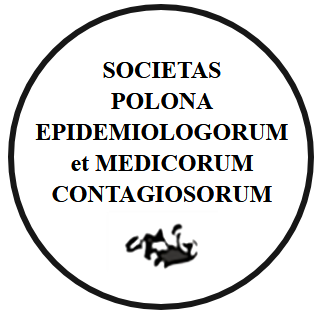PRACA ORYGINALNA
Adherence to preventive behaviors and perceived risk of Iranian medical students in response to the COVID-19 pandemic: Structural Equation Modeling
1
Preventive Medicine and Public Health Research Center, Psychosocial Health Research Institute, Iran University of Medical Sciences, Iran
2
Information Management Department, ISC, Iran
3
Department of Biostatistics, Tarbiat Modaress University, Iran
Data nadesłania: 12-06-2024
Data ostatniej rewizji: 29-09-2024
Data akceptacji: 08-11-2024
Data publikacji online: 15-11-2024
Data publikacji: 31-12-2024
Autor do korespondencji
Maryam Mahmoudi
Preventive Medicine and Public Health Research Center, Psychosocial Health Research Institute, Iran University of Medical Sciences, Tehran, Iran
Preventive Medicine and Public Health Research Center, Psychosocial Health Research Institute, Iran University of Medical Sciences, Tehran, Iran
Przegl Epidemiol 2024;78(4):381-392
SŁOWA KLUCZOWE
DZIEDZINY
STRESZCZENIE
Background: The COVID-19 pandemic resulted in a significant threat to people’s lives. Detection of adherence to preventive behaviors and risks perceived by people is essential for infection control. Medical students are future healthcare providers. Objective: This study explored adherence to preventive behaviors and risk perception of the COVID-19 pandemic in Iran’s medical students. Material and methods: In this cross-sectional study, Iranian medical students participated whose preventive behaviors and risk perceptions of COVID-19 were assessed by an online tool. Generalized Structural Equation Modeling (SEM) with a beta-regression family was used for mediation analysis. Results: A total of 654 medical students participated. The mean risk perception of COVID-19 on a 1 to 7 range scale was 3.53±1.7 for themselves and 3.66±1.7 for their family members. The risk perception for disease severity was 2.9±1.5. According to SEM, male sex, COVID-19 history, and living with parents were predictors of adherence directly and through the mediator pathway of risk perception (P <0.1). Briefly, the male sex reduced adherence directly and through risk perception reduction. The history of COVID-19 directly reduced adherence, but through the mediation pathway of risk perception, it increased adherence. However, the total effect was in favor of adherence reduction. Living with parents directly increased adherence but reduced adherence through the mediation pathway of risk perception. However, the total effect was in favor of adherence increase. Conclusions: Although conventionl statistical analaysis did not support the association of risk perception and adherence, the generalized SEM showed risk perception as a potential mediator with a small effect. The present study showed the roles of sex, COVID-19 history, and living with parents as the factors affecting risk perception and preventive behaviors on the basis of SEM results. Among the results, living with parrants was a modifiable factor to increase the adherence.
Przetwarzamy dane osobowe zbierane podczas odwiedzania serwisu. Realizacja funkcji pozyskiwania informacji o użytkownikach i ich zachowaniu odbywa się poprzez dobrowolnie wprowadzone w formularzach informacje oraz zapisywanie w urządzeniach końcowych plików cookies (tzw. ciasteczka). Dane, w tym pliki cookies, wykorzystywane są w celu realizacji usług, zapewnienia wygodnego korzystania ze strony oraz w celu monitorowania ruchu zgodnie z Polityką prywatności. Dane są także zbierane i przetwarzane przez narzędzie Google Analytics (więcej).
Możesz zmienić ustawienia cookies w swojej przeglądarce. Ograniczenie stosowania plików cookies w konfiguracji przeglądarki może wpłynąć na niektóre funkcjonalności dostępne na stronie.
Możesz zmienić ustawienia cookies w swojej przeglądarce. Ograniczenie stosowania plików cookies w konfiguracji przeglądarki może wpłynąć na niektóre funkcjonalności dostępne na stronie.




